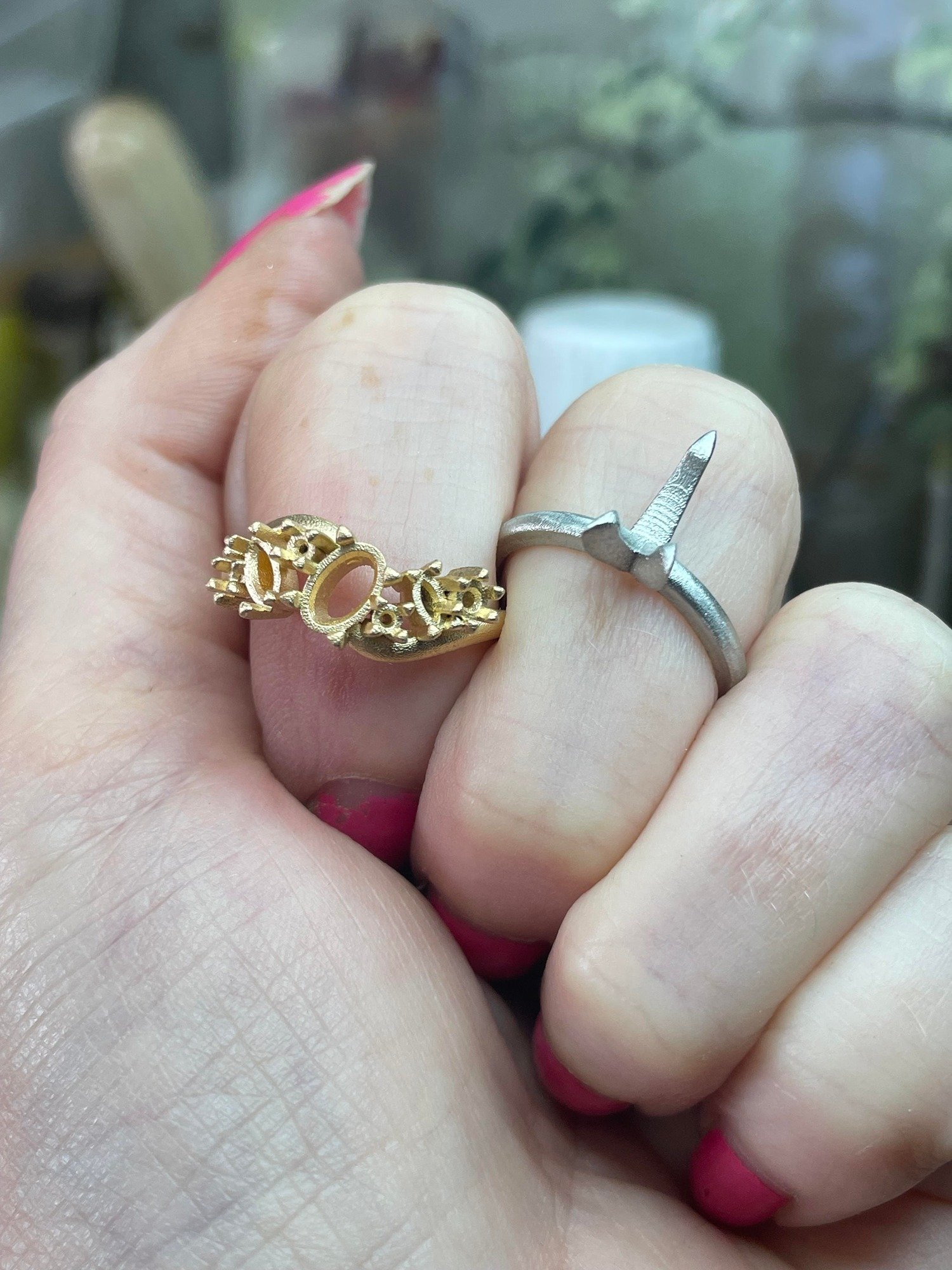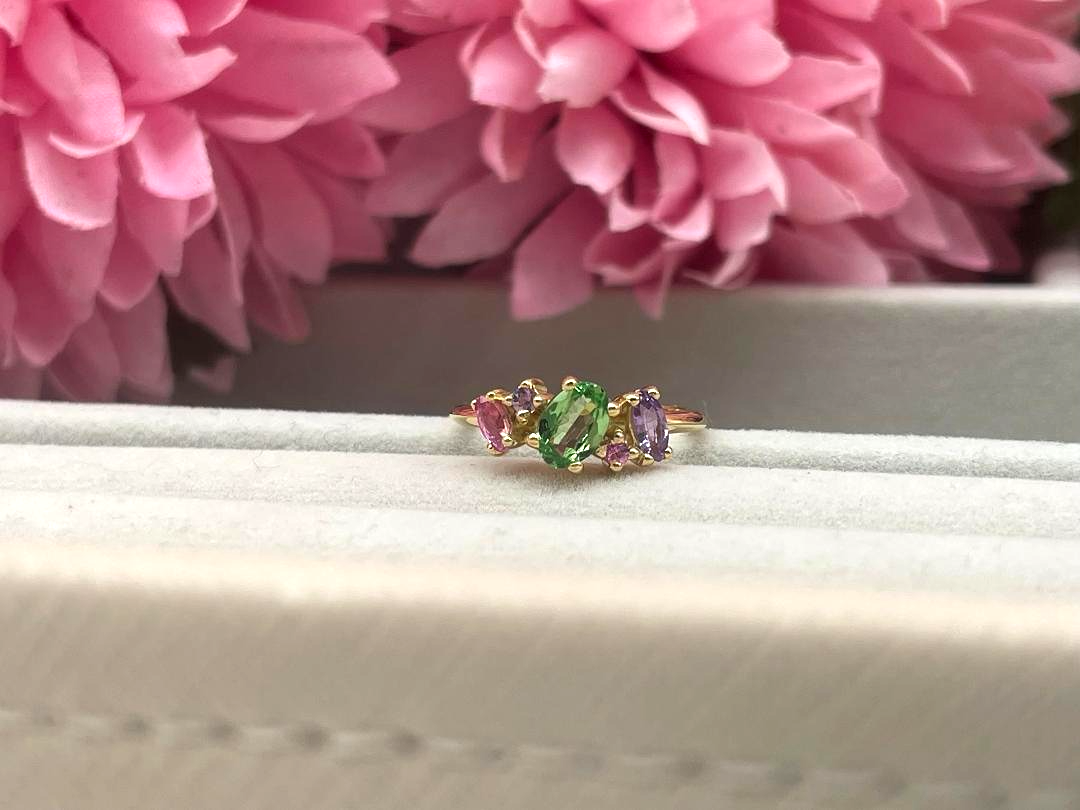As we look ahead to 2026, one thing is clear: the rulebook has been thrown out.Couples are moving further away from the traditional 'cookie-cutter' diamond solitaire and embracing rings that feel like genuine pieces of art. 2026 is set to be the year of personality, texture, and 'chaotic' beauty.If...
Beyond the Jewellery Box: Gifts That Resonate with PersonalityYou’ve decided to give a gift that truly tells a story. Now, the key is to choose a piece that aligns perfectly with the wearer's unique style.At Nude Jewellery, our designer, Nikki Galloway, creates each collection with a distinct...
How to Buy a Ring Without Knowing the Size: Your Ultimate Jewellery Gifting GuideThe Most Cherished Gifts are a Perfect FitBuying a piece of fine jewellery is an act of love, but let’s be honest: it comes with two big worries—getting the size right and nailing the style. While our collections...
🎁 The Case for Starting Your Christmas Shopping EarlyWe understand. The thought of tinsel and carols in November can feel premature. But when the gift you're searching for is a piece of exquisite jewellery—something truly unique and handcrafted—the planning starts now.To avoid the last-minute...
At Nude Jewellery, we believe your ring should be as unique and colourful as you are. That’s why we created the Allsorts Collection: a range dedicated to breaking tradition by embracing bold colours and unconventional gemstone cuts.Forget safe pairings. These rings are built around a central,...
When you hear the word 'sapphire', the first image that probably comes to mind is a deep, velvety blue. But what if we told you that this magnificent gemstone comes in a whole rainbow of colours, with one of the most enchanting being a delicate and romantic pink?Pink sapphires have surged in...
Dive Deep into "I Do": Why Teal Sapphires are the Hottest Engagement Ring TrendWhen it comes to engagement rings, the classic diamond has long held court. But for the modern couple seeking something truly unique, deeply personal, and breathtakingly beautiful, a new star is rising: the teal sapphire....
The Accidental Icon: The Story Behind Our Gold Ball CollectionSome of the best ideas aren't planned at all. They just... happen. Our Gold Ball Collection, a firm favourite among our customers, is the perfect example of a beautiful accident.It all started back in 1998 in a makeshift workshop at home....
When you think of a sapphire, it’s likely that a deep, mesmerising blue comes to mind. But sapphires, a form of the mineral corundum, are far more versatile than their iconic blue cousin. While diamonds have long been the star of the show, a quiet revolution is happening in the world of fine...
Considering a piece of rose gold jewellery? Here’s everything you need to know about the warm, romantic hue that is capturing hearts.Rose gold has always been a beautiful metal, but in the past 20 years, I've noticed a huge surge in its popularity. This warm, blush-toned metal feels both modern...
When you think of a sapphire, a deep, majestic blue probably comes to mind. It's the iconic shade of royalty and romance, but what if we told you that's only the beginning? The world of sapphires is a vibrant kaleidoscope of colour, offering a breathtaking alternative to traditional gemstones.At...
In a world often obsessed with perfect balance, there's a quiet revolution happening in fine jewellery. At Nude Jewellery, we've always championed the unexpected, and nowhere is that more evident than in our love for asymmetrical design. Forget everything you thought you knew about traditional...
From carats to care, everything you need to know before choosing your unique white gold jewellery.Ever wondered what makes white gold so brilliantly, well, white? It’s a question we get asked a lot, and for good reason! Unlike other metals that are a single element, white gold is a fascinating...
When you invest in a piece of fine jewellery, especially one as unique and personal as those from Nude Jewellery, you want to be certain of its quality and authenticity. This is where UK hallmarking comes into play – a practice steeped in history, offering you absolute peace of mind.At Nude...
At Nude Jewellery, we believe every love story is unique, and your proposal should be too. While the traditional engagement ring holds a special place, sometimes you need a fresh approach. That's where the proposal ring comes in – offering a brilliant, stress-free way to pop the question, perfect...
Keep Your Jewellery Cool this Summer...As the warm, sunny days of summer approach, many of us find ourselves enamoured with our beautiful jewellery, reluctant to take it off even for a moment. However, it is essential to be cautious! While summer is a wonderful time for soaking up vitamin D and...
Deciding between gold and platinum for your precious jewellery – be it a stunning engagement ring or a meaningful gift – can be a daunting task. This luxury consumer's guide from Nude Jewellery is designed to simplify your choice, highlighting the key characteristics of these two noble...
Trend Alert: Boho Style Engagement RingsAre you dreaming of an engagement ring that truly stands out? Something as unique and free-spirited as your love story? Then it's time to explore the captivating world of boho engagement rings! Moving away from traditional designs, these pieces are all about...
The 4c's are a universal grading system for diamonds that is in place to keep consistency within the diamond industry. Developed by the Gemmological Institute of America (GIA), diamonds purchased within jewellers often come with a GIA certificate describing the diamond in terms of the 4c's.Colour...
Created by German mineralogist Friedrich Mohs in 1812, the Mohs scale of hardness serves as a vital tool for mineral identification. Comprising 10 distinct minerals ranging from the softest (talc) to the hardest (diamond), this scale proves particularly valuable in jewellery making by helping...



















